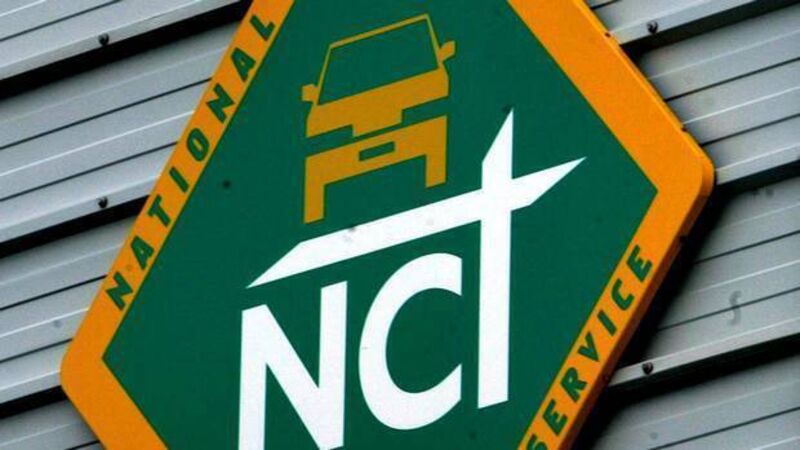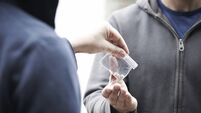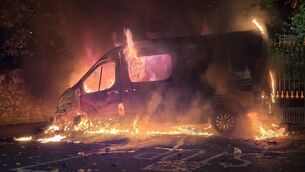Wear well: 91-year-old car passed NCT last year

Figures published by the Road Safety Authority on NCT results show just over 1m cars were tested last year – an annual decrease of 28%.
A 91-year-old car – a Plymouth manufactured by US carmaker Chrysler – was the oldest car to pass its NCT last year.
The vintage model, which was first registered in 1929, has replaced a 1932 Rolls Royce as the oldest vehicle to be submitted for a NCT in recent years.
The Plymouth, which is likely to have been recently imported or restored, failed its initial NCT when it was first tested in 2019.
The second-oldest car to be submitted for an NCT last year was a 1951 Rolls Royce, which failed on a number of grounds including its steering and suspension, wheels and tyres, and lights.
Figures published by the Road Safety Authority on NCT results show just over 1m cars were tested last year – an annual decrease of 28%.
Almost 384,000 fewer vehicles were submitted for testing during 2020 as NCT centres were closed between the end of March and early June due to the Covid-19 pandemic.
The overall pass rate for cars on the initial test was 43.7%, which was lower than previous years, including the average pass rate of 50% in 2019.
However, a spokesperson for Applus+, which carries out the NCT on behalf of the RSA, said last year’s statistics, including the general pass rate, were skewed by problems encountered with lifting equipment at NCT test centres, which meant checks on a vehicle’s body and suspension could not be carried out for a period.
When the first quarter of 2020 is excluded, which covered the period relating to incomplete tests, the overall pass rate for the year was 53%.
Over the same period, 15% of all cars failed a lane retest – more than 53,000 vehicles.
They included 9,414 cars which were classified as “fail dangerous” and considered unsafe to be driven on the public road.
NCT figures for 2020 show a wide variation in NCT results between the 47 test centres, with the highest pass rate in Ballinasloe, Go Galway, of 60.8%, more than twice the level of the centre with the lowest pass rate – Cavan with 28%.
“There are many reasons why there is such a range of results such as the age, level of maintenance, and mileage of cars,” said the Applus+ spokesperson.
As in previous years, the NCT test results for 2020 show a strong correlation between pass rates and the age of a car.
More than 5,700 cars registered in 2017, which were tested last year, recorded an average pass rate of 81.2%, which fell to 65.9% for 2016 models.
Pass rates declined consistently as cars got older up to 2008, when just 35.4% obtained a NCT certificate after the initial test.
The make of the vehicle with the highest pass rate – the Romanian car manufacturer, Dacia – with an average pass rate of 53.7%, was also the brand with the newest fleet of vehicles tested last year.
The average age of manufacture of Dacia models submitted for the NCT was 2015, compared to the overall average of 2010.
Other makes with high pass rates included Lexus (51%), Hyundai and Skoda (both 50.2%) and BMW (48.1%).
In contrast, the lowest pass rate among the leading brands was recorded by Chevrolet at just 24.5%, although the average year of its vehicles tested was 2008.
Other cars with low pass rates were Citroën (35.7%), Alfa Romeo (36.8%), Fiat (37.3%), and Peugeot (38.5%).
Separately, the model with the highest pass rate last year was the Mazda CX-5 – a mid-size SUV by the Japanese car manufacturer – which recorded an average pass rate of 66.8%.
It was narrowly ahead of the BMW 420 (66.6%) and the Renault Kadjar (66.3%).
Other models with pass rates in excess of 60% included the Mercedes-Benz CLA Class, Skoda Rapid, Lexus IS300, Audi Q3, Nissan Pullar, and Opel Mokka.
Much older models fared worse, with more than 1,500 Volkwagen Boras tested last year, with an average age of 17 years, recording a pass rate of just 21.2%.
Other models with an average age in excess of 15 years which also recorded pass rates below 30% included Vauxhall Vectra, Seat Cordoba, Lexus IS200, Peugeot 206 and 307, and Nissan Primera and Almera.
The latest figures show more than 17% of all cars tested had problems with their lighting and electrical equipment – almost 175,000 vehicles.
Almost 10% of cars failed a brake test, while 12% had defects with their suspension and steering.
More than 33,000 vehicles – 3.3% of the total – exceeded allowable emissions limits.









